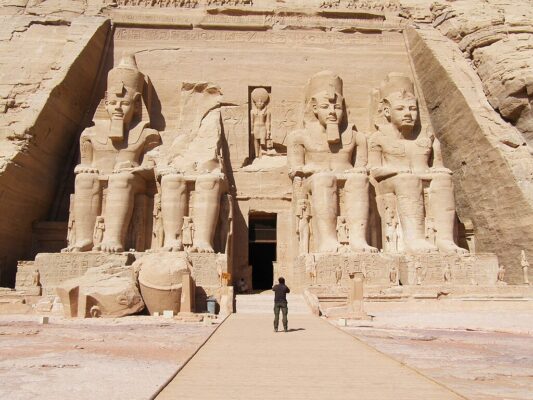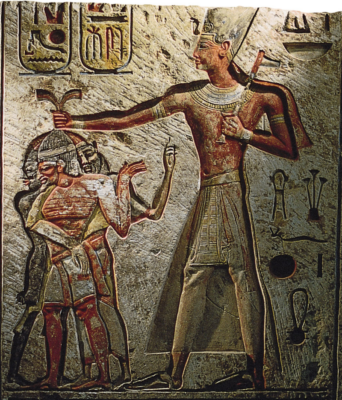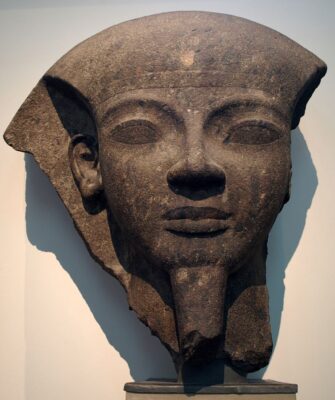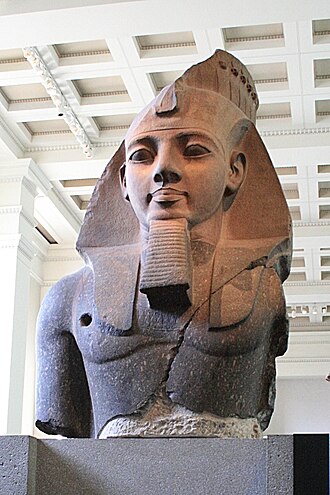King Ramses VI holds a unique place in the annals of ancient Egyptian history. Reigning from approximately 1145 to 1137 BCE, he was the last significant ruler of the Twentieth Dynasty. Despite challenges such as dwindling resources and political instability, Ramses VI made notable contributions to temple construction and worked tirelessly to uphold Egypt’s legacy during a period of decline. Follow archeology.dulichvn.net to learn more about mysterious artifacts.

1. The Reign of Ramses VI
1.1 Succession and Historical Context
Ramses VI rose to power following the brief reign of Ramses V, assuming control of a nation grappling with profound challenges. By the time of his accession, Egypt was experiencing a noticeable decline in its political influence and economic stability, the culmination of centuries of grandeur under the New Kingdom.
This period of uncertainty had its roots in the gradual erosion of central authority, compounded by external pressures from neighboring powers and internal unrest. As a descendant of the illustrious Ramses III, Ramses VI inherited both the legacy of a once-dominant empire and the formidable task of sustaining it amidst mounting adversities.
1.2 Efforts to Sustain Stability
Ramses VI devoted his reign to preserving the cultural and political fabric of Egypt. Recognizing the importance of religious and administrative cohesion, he undertook reforms to strengthen governance and maintain public order. Religious initiatives played a central role in his strategy, as he sought to reinforce the divine association of the pharaoh with the gods, particularly Amun-Ra.
These measures were designed to bolster the people’s faith in the monarchy and to unify the kingdom during a time when loyalty was crucial for survival. His leadership, though challenged by external and internal crises, reflected a commitment to the ideals of pharaonic rule and the preservation of Egypt’s identity.
1.3 Challenges of a Waning Empire
The reign of Ramses VI was fraught with obstacles, underscoring the struggles of a diminishing empire. Foreign incursions, particularly from the Sea Peoples and other adversaries, threatened Egypt’s borders and strained its resources. The loss of territories in Nubia and the Levant further diminished Egypt’s influence, weakening its grip on lucrative trade routes and strategic lands.
Domestically, the pharaoh contended with economic difficulties, social unrest, and a diminishing workforce needed for the maintenance of temples and monumental projects. Despite these hardships, Ramses VI demonstrated resilience, employing strategies to mitigate these issues and sustain the integrity of the kingdom for as long as possible.
Through his efforts, Ramses VI upheld the traditions of pharaonic leadership, even as the empire’s golden age faded into history.

2. Contributions to Temple Construction
2.1 Renovations at Karnak and Luxor
Ramses VI played a significant role in maintaining and expanding Egypt’s architectural heritage through his contributions to the iconic temples of Karnak and Luxor. At Karnak, he commissioned enhancements to existing inscriptions, ensuring that his legacy would be intertwined with the divine narratives depicted on the temple walls.
These additions reinforced his role as a protector and servant of the gods, particularly Amun-Ra. Similarly, at Luxor, Ramses VI continued the tradition of constructing monuments to honor the deities and celebrate the pharaoh’s divine authority. His work on these temples not only preserved their grandeur but also showcased his dedication to upholding Egypt’s cultural and spiritual identity during a challenging era.
2.2 The Tomb of Ramses VI: A Timeless Masterpiece
The tomb of Ramses VI, known as KV9 in the Valley of the Kings, stands as a testament to his ambition and artistic vision. This grand burial site features an expansive layout with corridors and chambers intricately adorned with vivid scenes from sacred texts such as the Book of Gates and the Book of Caverns.
These detailed depictions illustrate the journey of the soul through the afterlife, emphasizing the pharaoh’s connection to the divine and his aspiration for eternal life. The tomb’s design, with its vibrant colors and symbolic imagery, represents one of the finest examples of New Kingdom funerary art. KV9 remains a highlight for modern archaeologists and visitors, offering profound insights into ancient Egyptian religious beliefs and artistic excellence.
2.3 Preservation of Religious Practices
Amidst the socio-political challenges of his reign, Ramses VI prioritized the preservation of Egypt’s deeply rooted religious traditions. By commissioning temple renovations and funding the continuation of key rituals, he sought to reaffirm the central role of Amun-Ra and other gods in daily life.
His efforts included supporting the priesthood, which played a crucial role in maintaining the temples and conducting ceremonies that reinforced the divine order. These acts were not merely symbolic; they were critical for unifying the kingdom and stabilizing its spiritual foundation during turbulent times. Through his devotion, Ramses VI ensured that the cultural and religious legacy of ancient Egypt remained resilient, even as the empire faced decline.
This blend of architectural ingenuity, artistic mastery, and spiritual dedication cements Ramses VI’s place as a pharaoh who, despite the challenges of his time, left an indelible mark on Egypt’s history.

See more: The Gundestrup Cauldron: A Marvel of Celtic Art and Culture
3. Legacy of Ramses VI
3.1 Historical Significance: Bridging Two Eras
Ramses VI’s reign marks a pivotal moment in ancient Egyptian history, representing both the final years of the Twentieth Dynasty and the gradual transition into the decline of Egypt’s New Kingdom. Despite the mounting challenges of foreign invasions, economic instability, and internal dissent,
Ramses VI upheld the enduring traditions of pharaonic rule. His ability to maintain the semblance of stability and continuity reflects the resilience of Egypt’s monarchy during one of its most turbulent periods. This transitional era under Ramses VI serves as a lens through which historians can better understand the complexities of late New Kingdom politics and society.
3.2 Contributions to Art and Culture
The reign of Ramses VI was a testament to the enduring creativity and cultural vibrancy of ancient Egypt. His tomb in the Valley of the Kings stands as a masterpiece of funerary art, with its intricate carvings, vibrant colors, and symbolic depictions of the afterlife. Scenes from sacred texts such as the Book of Gates and the Book of Caverns adorn the walls, blending religious devotion with artistic innovation.
These works underscore the advanced techniques and deep spiritual beliefs of the era. Beyond the tomb, Ramses VI’s contributions to temple restoration and the continuation of monumental architecture highlight his commitment to preserving Egypt’s cultural identity, even in an era of diminishing resources.
3.3 Influence on Future Generations
Although Ramses VI ruled during a time of decline, his efforts left a lasting legacy that resonated with subsequent generations. His dedication to temple construction and the preservation of religious practices provided a blueprint for later pharaohs striving to maintain Egypt’s cultural and spiritual heritage.
The magnificence of his tomb, KV9, continues to inspire awe, attracting historians, archaeologists, and visitors from around the globe. It offers profound insights into the religious doctrines, artistic achievements, and societal values of his time. In many ways, Ramses VI’s reign serves as a bridge connecting the grandeur of Egypt’s past with the challenges of its future, ensuring his place in the annals of history as a pharaoh who strived to sustain the legacy of his civilization.

Conclusion
King Ramses VI, the final major ruler of the Twentieth Dynasty, exemplified determination and ingenuity in the face of adversity. His contributions to temple construction, his efforts to stabilize a declining empire, and his richly decorated tomb solidify his place as a pivotal figure in ancient Egyptian history. As modern archaeology continues to uncover details of his reign, Ramses VI’s legacy endures as a testament to the resilience and grandeur of ancient Egypt.


CÁC TIN KHÁC
Mary Walton: The Forgotten Inventor Who Helped Clean Up America’s Cities
Tomb of Queen Nefertari in the Valley of the Queens, Egypt
Discover the Hypostyle Hall of the Temple of Hathor at Dendera
Venus de Losange: Unveiling the Mystery of a 20,000-Year-Old Paleolithic Icon